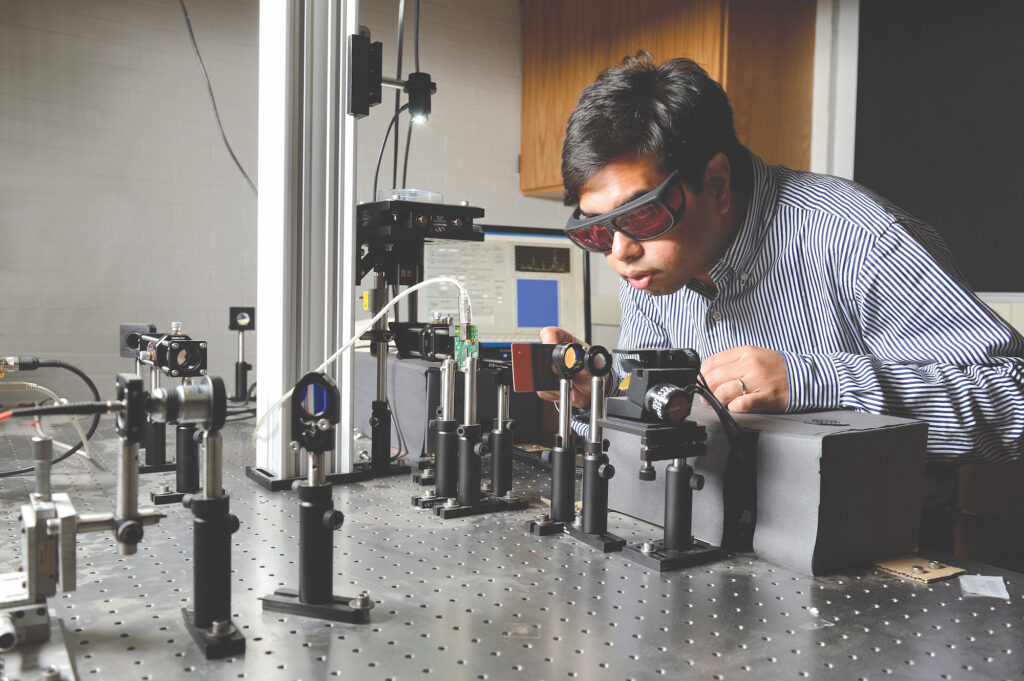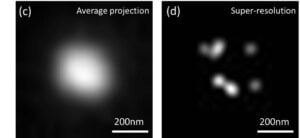
Even the smallest molecule can tell a big story. For instance, observing a single molecule can throw light on underlying biological processes in the human body. In fact, molecular imaging procedures—which are noninvasive and painless—are being used to diagnose and manage the treatment of COVID-19, cancer, heart disease, and other serious health conditions.
One of the more promising techniques for single-molecule imaging is surface-enhanced Raman spectroscopy, or SERS. By focusing a laser beam on the sample, SERS detects changes in molecules based upon how they scatter light and can identify specific molecules through their unique Raman spectra: a sort of molecular fingerprint. Advantages of SERS are that it is nondestructive and requires minimal sample preparation, as it does not require added chemicals or modifications to take measurements.
A Whiting School team led by Ishan Barman has described a novel nanomaterial that enables fast and highly sensitive single-molecule detection using SERS. The team’s invention could pave the way for rapid and more accurate diagnostic testing. The scientists published their study recently in Advanced Materials.

To create its new material, called DNA-Silicified Template for Raman Optical Beacon, or DNA-STROBE, the team engineered optical cavities of only a few nanometers or fewer. In SERS imaging, these plasmonic cavities “trap” beams of light by converting their electromagnetic radiation into electron waves. The Barman team’s tiny plasmonic nanocavities exponentially increase the density of this trapped electromagnetic energy, potentially enabling quantitative biomolecular imaging at ultralow concentrations.
“The effectiveness of SERS measurements depends on the architecture and reproducibility of the nanoscale probes. If successfully designed and realized, our DNA-STROBE structures offer real-time, single-molecule, label-free optical sensing that is almost impossible to achieve with any existing platforms,” says Barman, an associate professor of mechanical engineering.
The next step, the researchers say, will be to develop a set of tailored DNA-STROBE-derived analytical tools for a range of applications. For example, the team believes its approach offers a state-of-the-art platform for ultrasensitive detection of circulating cancer biomarkers.
“With suitable customization, the DNA-STROBE could enable progress in a wide variety of fields ranging from clinical diagnostics and basic biomedical research to environmental sensing and single-molecule manipulation,” says Barman.




